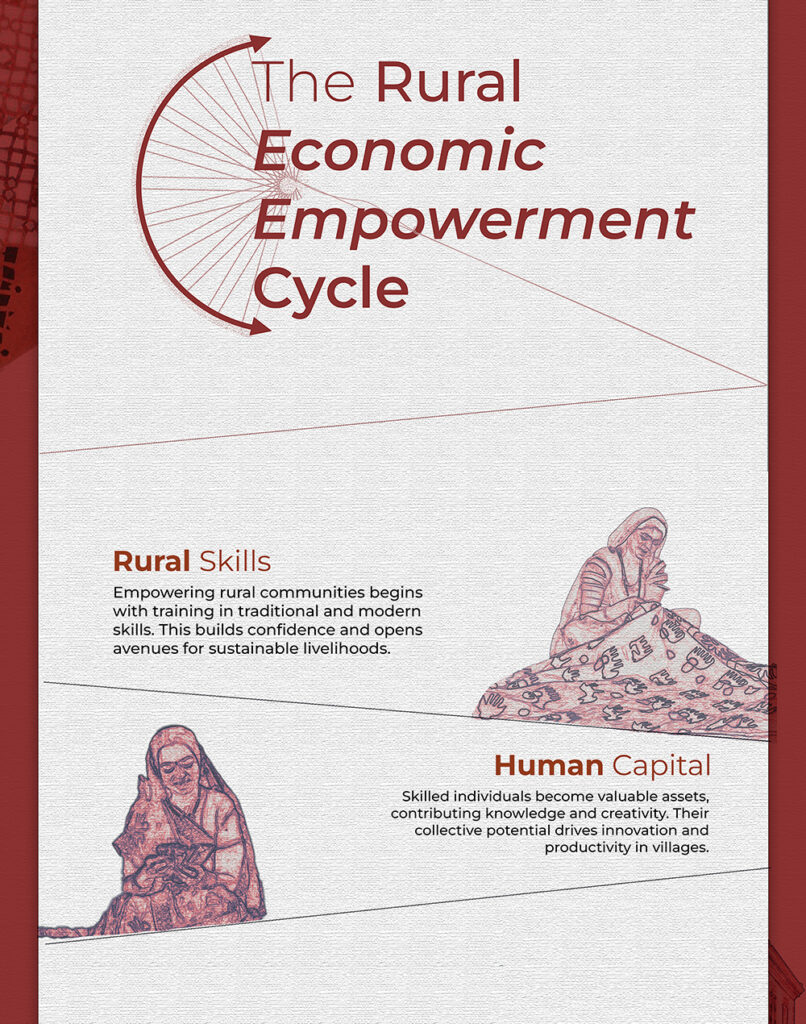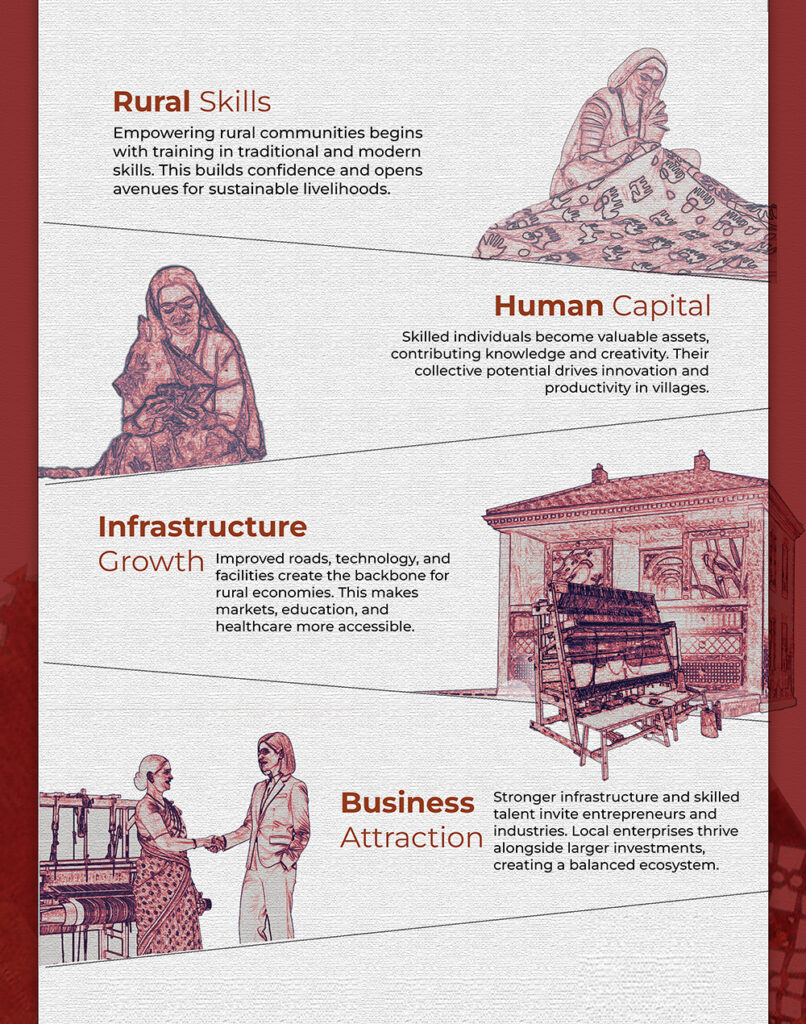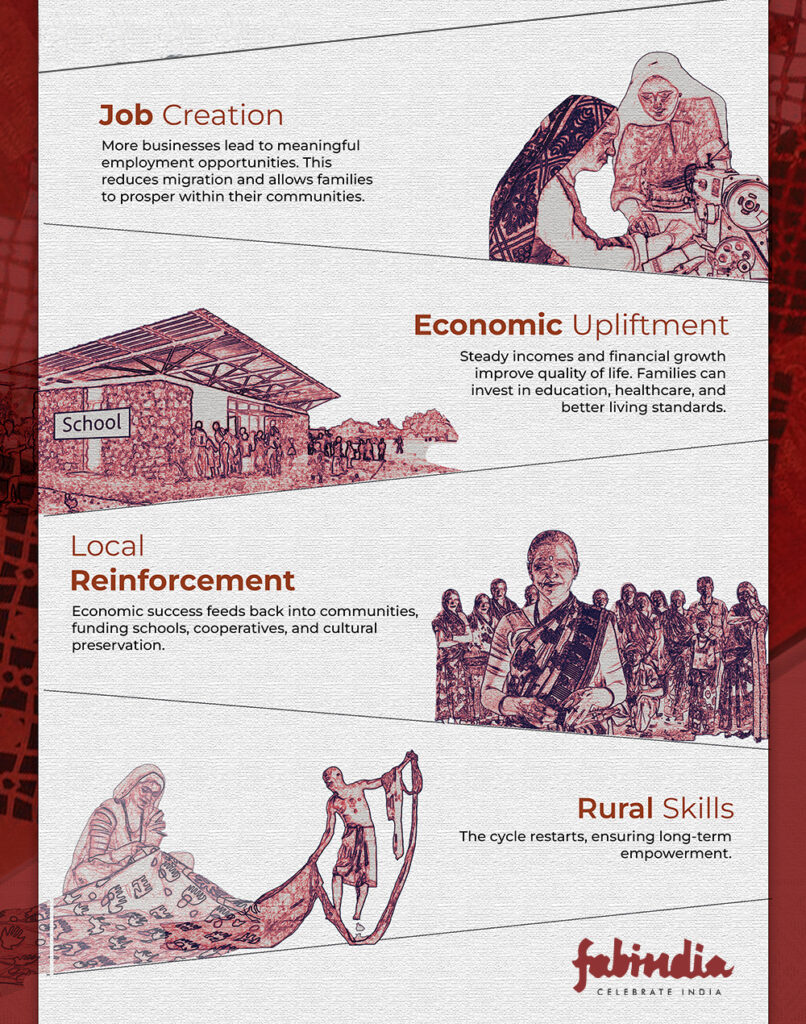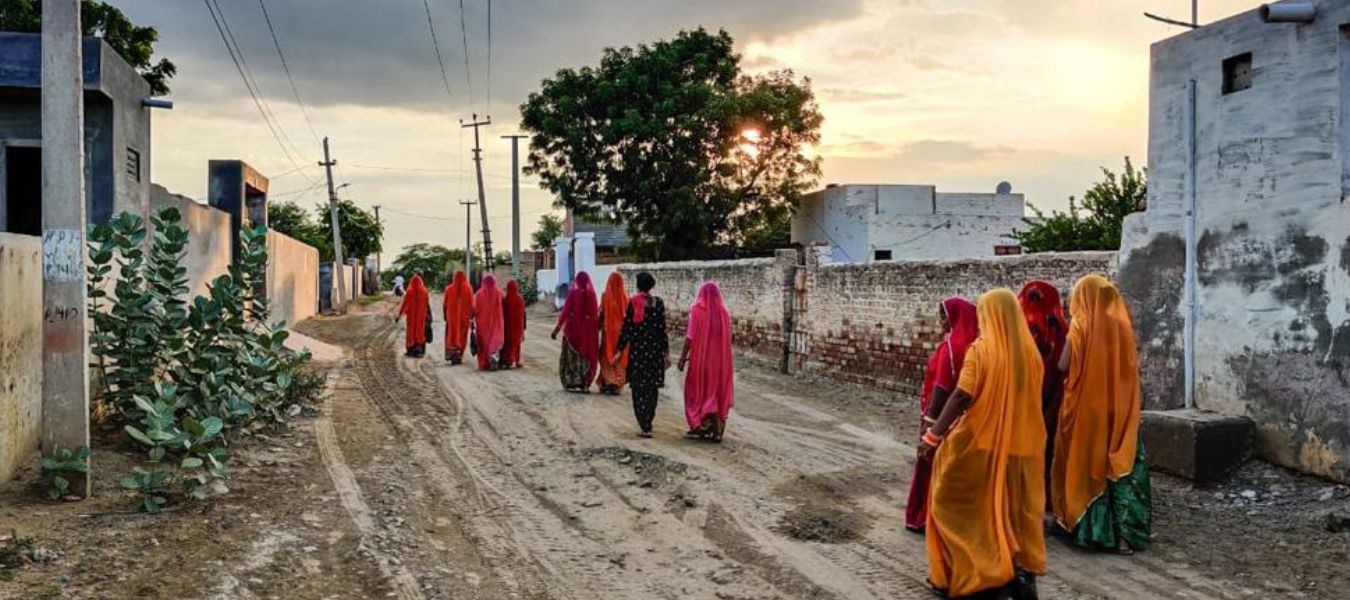The first move by a Neanderthal might have been to find food, but as civilization progressed, the concept of money emerged and economies grew, the purpose of travel and migration underwent a drastic change. Today, the search for a better livelihood and economic opportunity is the major reason for individuals to migrate. According to the Migration report, there is a heavy influx of migrants from rural areas who move to semi-urban or metro areas to improve their living conditions and find better jobs to support their families.
The Ripple Effect
If the increasing number of economic migration is any indication, it’s that the responsibility to drive meaningful transitions no longer lies with the government alone. Businesses, whether through core operating models or corporate social responsibility (CSR) initiatives, must step in and share the load. While policy-level initiatives invest in rural skill development, private level investments can create more job opportunities and employment in these areas. Migrant workers constitute a major part of labour force in the country, but the lack of formalised migration comes with its own set of challenges.
Take the case of local artisans and craftsmen who migrate to urban areas in search of better-paying jobs. While this move might help them support their families financially, it comes at the cost of their traditional skills. Separated from their craft, they turn to jobs that require minimal skills or are non-technical in nature, losing touch with their art and turning vibrant local traditions into dying practices. Moving to urban areas with a large population also comes at the cost of compromised living conditions and alienated sense of community, both of which were once integral to their way of living.
Shifting focus towards rural development and increasing employment opportunities in the local ecosystem allows these individuals to stay rooted and build livelihoods that do not compromise their way of living and values. Holistic economic development should not be viewed solely as a tool to curb migration, but also an opportunity to preserve cultural heritage and social fabric of the region.
Fabindia’s Rural Skilling and Employment Initiative
When Fabindia started in 1960, India was still in the early phase of nation-building. The Second Five-Year Plan was underway and ideas of self-reliance and economic empowerment had been carried over from the Independence struggle. At a time when socially driven business models were unheard of, Fabindia took a different path. Our mission was simple: to empower rural communities and bring the heritage of India to the broader market.
What began as an effort to support cottage industries has grown to a lasting commitment- one that we continue to uphold even decades later in an India that is not building a nation, but striving to become a $5 trillion economy.



Economic migration is not just the movement of people, but a reflection of security and opportunity. When we bring opportunities closer to home, we strengthen the social fabric of rural India. Looking beyond urban markets and seeing rural India as a partner will help us redefine growth in the country. This is about building a stronger and inclusive India- one village, one artisan and one skill at a time.






